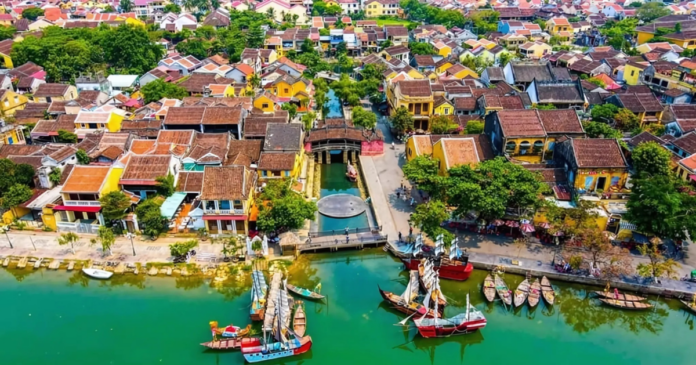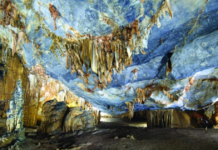Hoi An is not only a place that preserves the marks of various cultural exchanges but also a charming destination where visitors can deeply feel the local people’s way of life. With its enchanting beauty, rich local delicacies, and peaceful atmosphere, Hoi An promises to offer unforgettable experiences, providing an opportunity to explore the culture and history of one of Vietnam’s most beautiful cities.
1. Where is Hoi An?
Hoi An City, covering an area of about 61.71 km², is part of Quang Nam Province and was officially established on January 21, 2008, consisting of 13 administrative units. Among these, there are 9 wards: Thanh Ha, Cam Chau, Cam An, Cua Dai, Minh An, Cam Nam, Tan An, Son Phong, and Cam Pho, along with 4 communes: Cam Thanh, Cam Kim, Cam Ha, and the island commune of Tan Hiep, belonging to Cu Lao Cham.

Situated at the downstream junction of the Thu Bon River, Hoi An is 30 km southeast of Da Nang City and 50 km northeast of Tam Ky. With a combination of both coastal and island landscapes, Hoi An boasts rich natural scenery, opening up vast potential for tourism and economic development. The city’s land area spans about 46.22 km², bordered to the south by Duy Xuyen district, and to the west and north by Dien Ban. In addition, Hoi An has a coastline of approximately 7 km facing the East Sea, offering favorable conditions for beach tourism and recreational activities.
2. Top attractions in Hoi An
2.1 Hoi An ancient town
The Ancient Town of Hoi An, recognized by UNESCO as a World Cultural Heritage site, stands out with its ancient houses, narrow streets, and vibrant lanterns, creating a peaceful and romantic atmosphere. Structures like old houses, temples, and guild halls reflect the architectural influences of Vietnamese, Chinese, and Japanese cultures, making visitors feel as though they’ve stepped into another world.
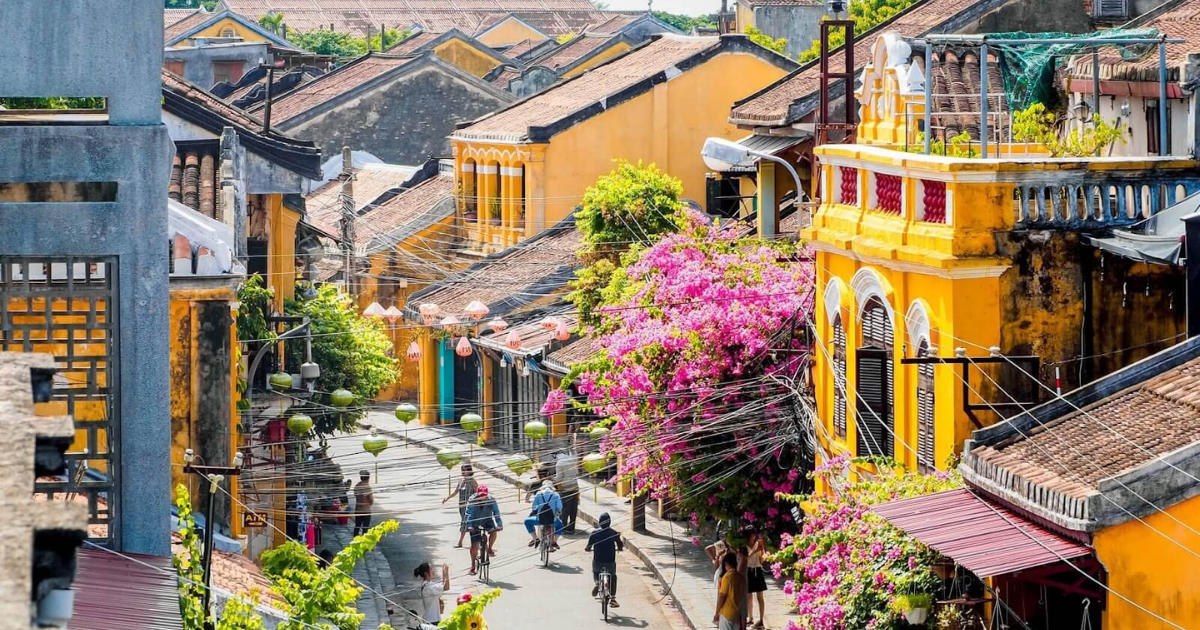
Leisurely walking through the charming streets of the Ancient Town not only provides delightful experiences but also allows visitors to deeply appreciate the unique cultural values of this place. This is an unmissable journey for anyone visiting Hoi An.
2.2 The Japanese covered bridge – The symbol of Hoi An
The Japanese Covered Bridge, also known as Lai Vien Kieu, is one of the most famous landmarks in Hoi An’s Ancient Town. Built in the 17th century by Japanese merchants, this wooden bridge is not only a transportation route but also a religious site, with a small temple dedicated to the Three Teachings and the Northern Deity of the Guardian, which is why it is called Chua Cau (Cau Temple).

The bridge is distinguished by its unique Japanese architectural style, featuring a curved roof, intricate carvings, and a yin-yang tiled roof. Not only is it a remarkable architectural structure, but the Japanese Covered Bridge is also a significant cultural symbol of Hoi An, attracting thousands of visitors every year.
2.3 Explore the Chinese guild halls
Hoi An was once one of Vietnam’s busiest seaports, attracting many merchant communities from around the world, especially the Chinese. The Chinese guild halls here were established as symbols of solidarity and cultural exchange. Each guild hall was typically founded by a group of Chinese people from the same hometown or industry, with the purpose of worshipping deities and ancestors and providing a place for cultural and community activities.
These guild halls are not only sacred sites but also play an important role in strengthening the community, preserving customs, and maintaining the cultural traditions of the Chinese people in Hoi An, becoming an essential part of the city’s diverse cultural landscape.
2.3.1 Phuc Kien guild hall
Phuc Kien Guild Hall, also known as Phuoc Kien, is one of the prominent historical and cultural landmarks in Hoi An’s Ancient Town. Built in the 17th century by the Phuc Kien Chinese community, this hall serves as a place of worship for the deity Thien Hau Thanh Mau and other guardian gods, while also symbolizing unity and traditional culture.

The guild hall is remarkable for its Chinese architectural style, featuring curved roofs, exquisitely carved walls, and majestic Buddha statues. This site not only attracts visitors with its architectural beauty but also holds deep cultural significance, enriching the cultural tapestry of Hoi An.
Address: 46 Tran Phu, Cam Chau, Hoi An, Quang Nam, Vietnam
2.3.2 Chieu Chau guild hall
Chieu Chau Guild Hall, also known as Chua Ong Bon, is an important historical site built in 1845 by the Chieu Chau Chinese community in Hoi An. Initially created as a place for community activities, worship, and the protection of sea travelers, this guild hall has become a distinct cultural symbol of the area.
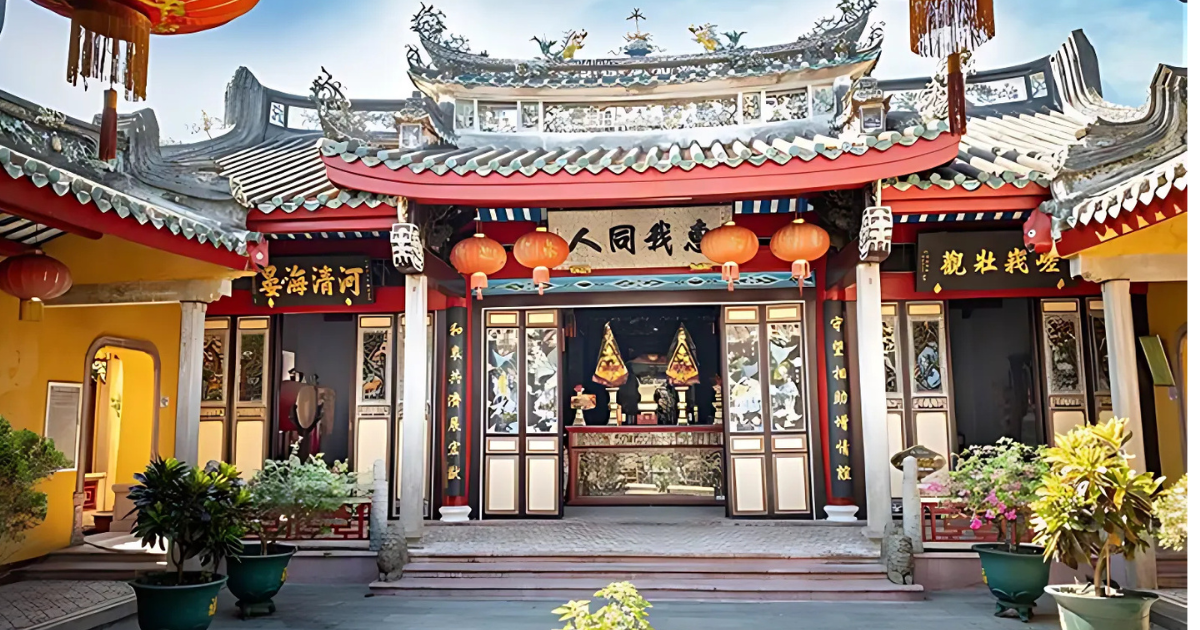
Covering about 600m², the guild hall consists of the main hall, an entrance hall, side buildings, and a spacious garden. The unique architecture and sacred atmosphere of this place attract visitors while also helping preserve the cultural values of the Chinese community in Hoi An.
Address: 362 Nguyen Duy Hieu, Cam Chau Ward, Hoi An City, Quang Nam Province
2.3.3 Quang Dong guild hall
Quang Dong Guild Hall, established in 1885 by the Quang Dong merchant association, is one of the prominent cultural sites in Hoi An’s Ancient Town. This structure represents traditional Chinese architectural style, with intricate and elaborate decorative details.
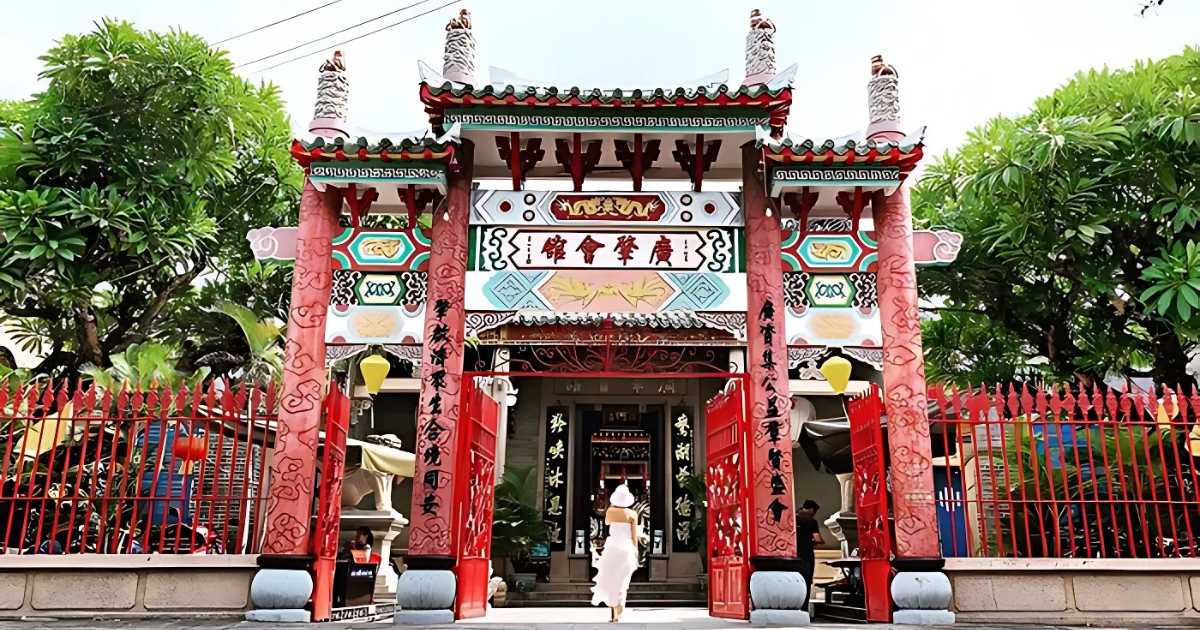
The guild hall includes a three-gate entrance, a garden, a pavilion, two eastern and western side buildings, the main hall, and a back courtyard, all reflecting the distinct culture of Guangdong. Not only is it a captivating destination for tourists, but Quang Dong Guild Hall also serves as a community and spiritual center for the Chinese community, helping to preserve and promote traditional cultural values within the heart of Hoi An’s Ancient Town.
Address: 176 Tran Phu, Minh An Ward, Hoi An, Quang Nam, Vietnam
2.4. Unique features of the ancient houses
2.4.1 Phung Hung ancient house
The Phung Hung ancient house, built in 1780 by a Vietnamese merchant, has endured more than 240 years of history alongside Hoi An’s development. The house is not only a national historical and cultural monument but also attracts visitors due to its unique architecture and long-standing historical significance.
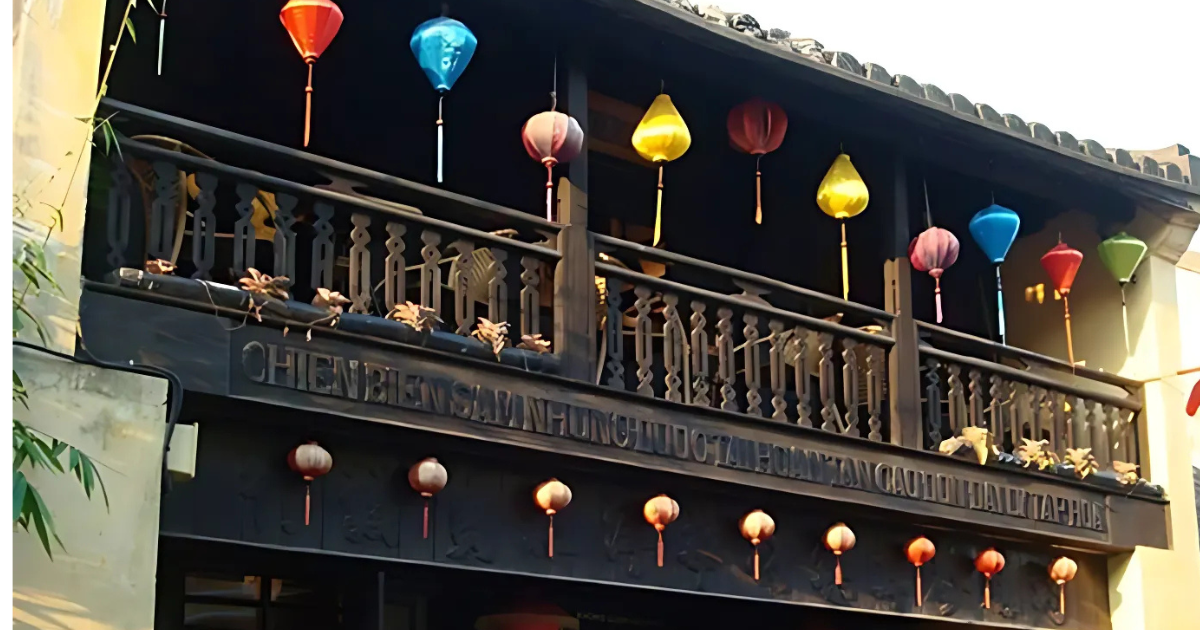
With a style that blends Chinese, Japanese, and Vietnamese architectural influences, the facade of the Phung Hung Ancient House is divided into three sections and two stories, topped with traditional yin-yang tiles. The interior is meticulously arranged with many antique items, preserving valuable marks of time.
The Phung Hung Ancient House is open daily from 8:00 AM to 6:00 PM and offers free entry, making it an ideal spot for visitors. In addition to exploring the architecture and history, guests can shop for souvenirs at the in-house shop, enriching their experience of the ancient town of Hoi An.
Address: 4 Nguyen Thi Minh Khai, Hoi An City.
>> Explore the Imperial City of Hue: The timeless beauty of the ancient capital citadel
2.4.2 Tan Ky ancient house
Tan Ky Ancient House, one of the most famous historic houses in Hoi An, was built in 1741 and preserves the distinct historical and cultural values of this ancient town. The house’s architecture harmoniously blends the influences of Vietnamese, Japanese, and Chinese cultures, with its yin-yang tiled roof and exquisite decorative details.

Beyond its architectural beauty, Tan Ky Ancient House also stands out due to its valuable collection of artifacts and the story of the Le family, who have lived there for seven generations. This is a popular destination for visitors from all over the world, not only to admire the unique architecture but also to deeply experience the history and rich culture of Hoi An.
Address: 101 Nguyen Thai Hoc, Hoi An City.
2.4.3 Other places you can visit
- Quan Thang Ancient House, located at 77 Tran Phu, Minh An Ward, Hoi An.
- Duc An Ancient House, located at 129 Tran Phu, Hoi An City.
- Sa Huynh Culture Museum, located at 149 Tran Phu Street, Hoi An City, Quang Nam Province.
- Hoi An Folk Culture Museum, located at 33 Nguyen Thai Hoc, Minh An Ward, Hoi An, Quang Nam, Vietnam.
2.5 Visiting traditional villages
2.5.1 Thanh Ha pottery village
Thanh Ha Pottery Village, located in Hoi An, Quang Nam, is a famous tourist spot with a history spanning over 500 years, renowned for its traditional pottery products. Visitors here have the opportunity to tour pottery workshops, observe artisans at work, and even try their hand at pottery-making. The pottery products from this village also make excellent souvenirs.
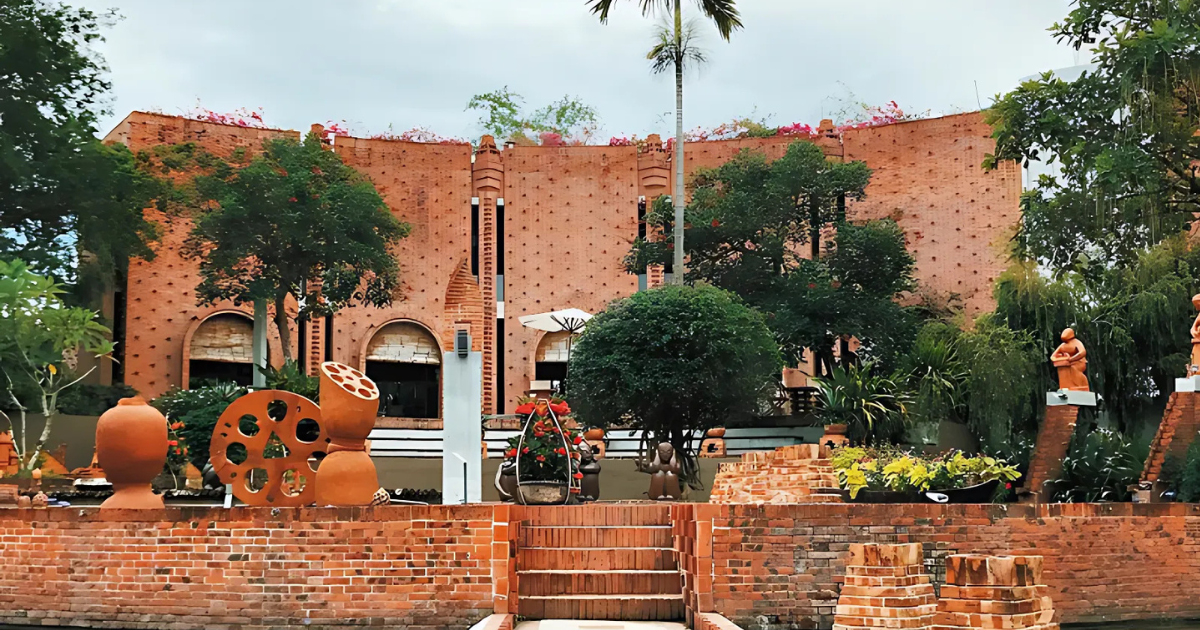
To reach Thanh Ha Pottery Village, visitors can travel by motorbike, taxi, or bus. The village is open daily from 8:30 AM to 5:30 PM, with an entrance fee of 20,000 VND per person. This is an ideal destination for those interested in exploring Hoi An’s pottery culture and craftsmanship.
Address: Pham Phan, Thanh Ha, Hoi An, Quang Nam, Vietnam, about 3.5 km west of the ancient town center.
2.5.2 Hoi An handicraft workshop
The Hoi An Handicraft Workshop is a special destination that preserves and develops 12 long-standing traditional crafts from the region. Among these are notable villages such as Kim Bong Woodworking Village, Thanh Ha Basketry Village, Thanh Ha Blacksmith Village, Phuoc Kieu Silvercraft Village, Phuoc Kieu Sewing Village, Kim Bong Embroidery Village, Thanh Ha Pottery Village, Bai Thom Conical Hat Village, along with Kim Bong Lantern and Carving Villages, and Kim Bong Lacquerware Village.
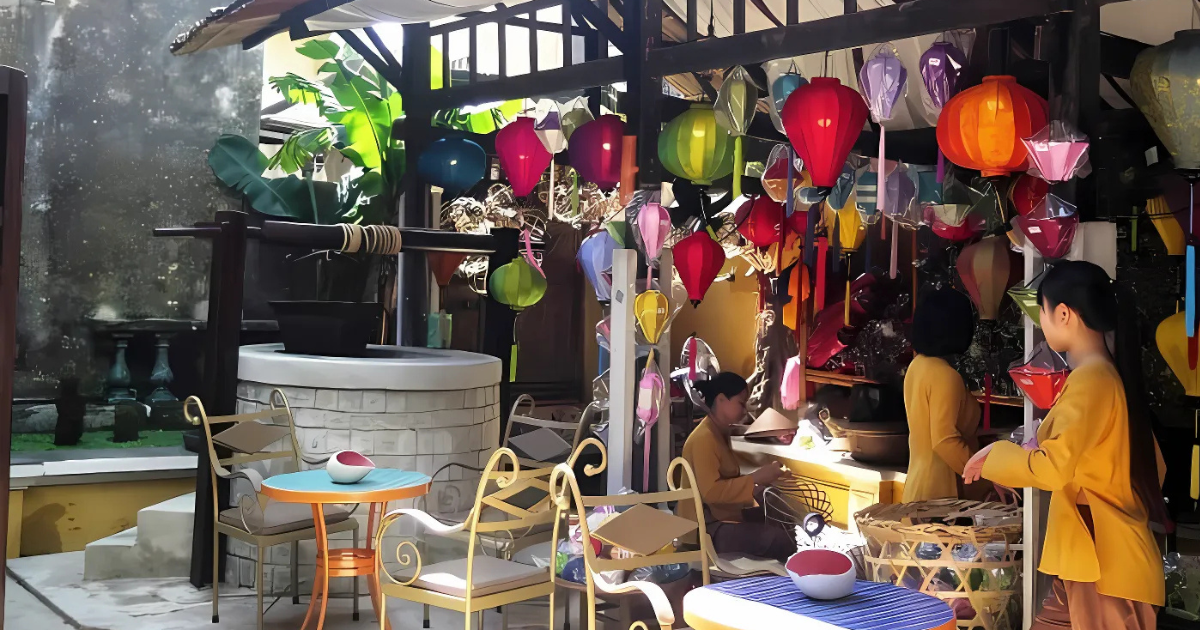
Visitors to the Hoi An Handicraft Workshop not only get a chance to learn about the history and culture of these traditional crafts but also observe skilled artisans creating fine handmade products. Furthermore, visitors can participate in craft-making workshops and purchase unique handicraft items as souvenirs, contributing to the preservation and promotion of Hoi An’s traditional culture and artistry.
Address: 9 Nguyen Thai Hoc, Hoi An City.
2.5.3 Kim Bong woodworking village
Kim Bong Woodworking Village, one of Hoi An’s traditional craft villages, is famous for its intricate handcrafted wooden products. With over 500 years of history, this village gathers skilled artisans who have preserved and passed down woodworking techniques through generations.
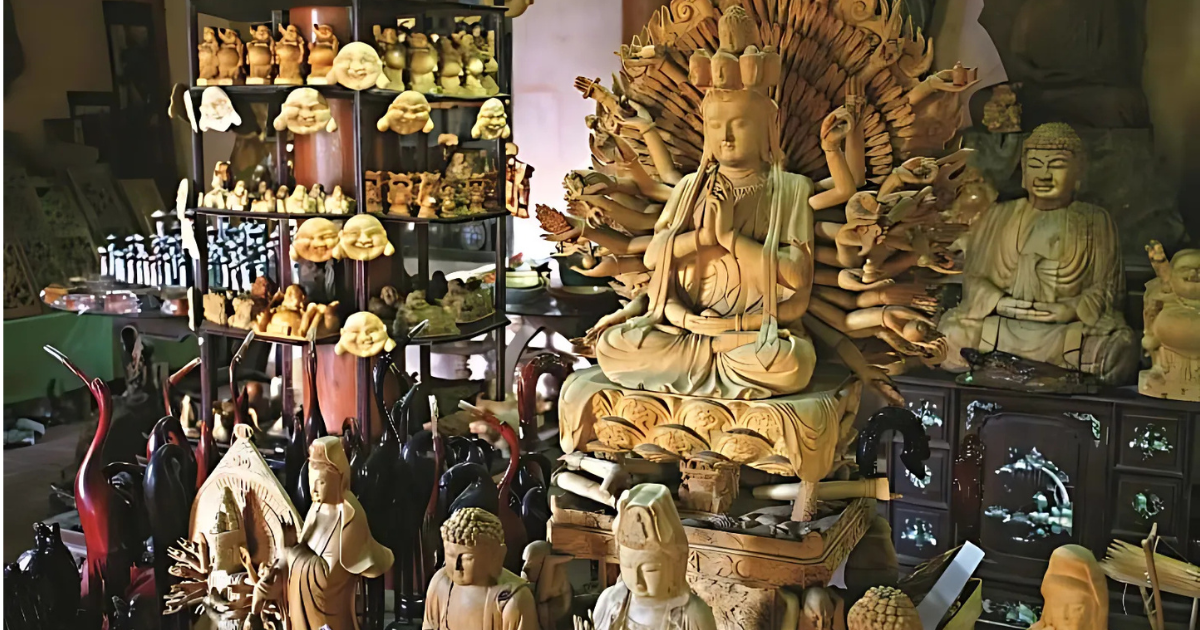
Visitors to Kim Bong Woodworking Village can tour the workshops, witness the process of crafting fine wooden products, and purchase unique souvenirs. In addition to observing, visitors can participate in activities such as woodworking, painting, or join traditional festivals held in the village.
Kim Bong Woodworking Village is usually open from 8:00 AM to 5:00 PM, so visitors are advised to plan accordingly to fully experience the village’s unique culture.
Address: Trung Ha, Cam Kim, Hoi An City, Quang Nam Province.
2.6 An Bang beach
An Bang Beach, stretching about 4 km north of Cua Dai Beach, is known as one of the most beautiful beaches in Hoi An. It stands out with its crystal-clear waters, fine white sand, and gentle waves, creating an ideal environment for relaxation.
It takes only about 10 minutes by vehicle from An Bang Beach to the center of Hoi An Ancient Town, making it easy for visitors to enjoy both the beach and the fresh, tranquil atmosphere.

In 2021, An Bang Beach was named one of the 25 best beaches in Asia by the renowned travel website TripAdvisor, further solidifying its place as a favorite among visitors.
Address: Cam An Ward, Hoi An City, Quang Nam Province.
2.7. Cua Dai beach
Cua Dai Beach, known as one of the most beautiful beaches in Vietnam, attracts visitors with its long stretch of soft white sand, clear blue waters, and picturesque rows of coconut trees. It is an ideal destination for those who want to relax, swim, and engage in recreational activities.
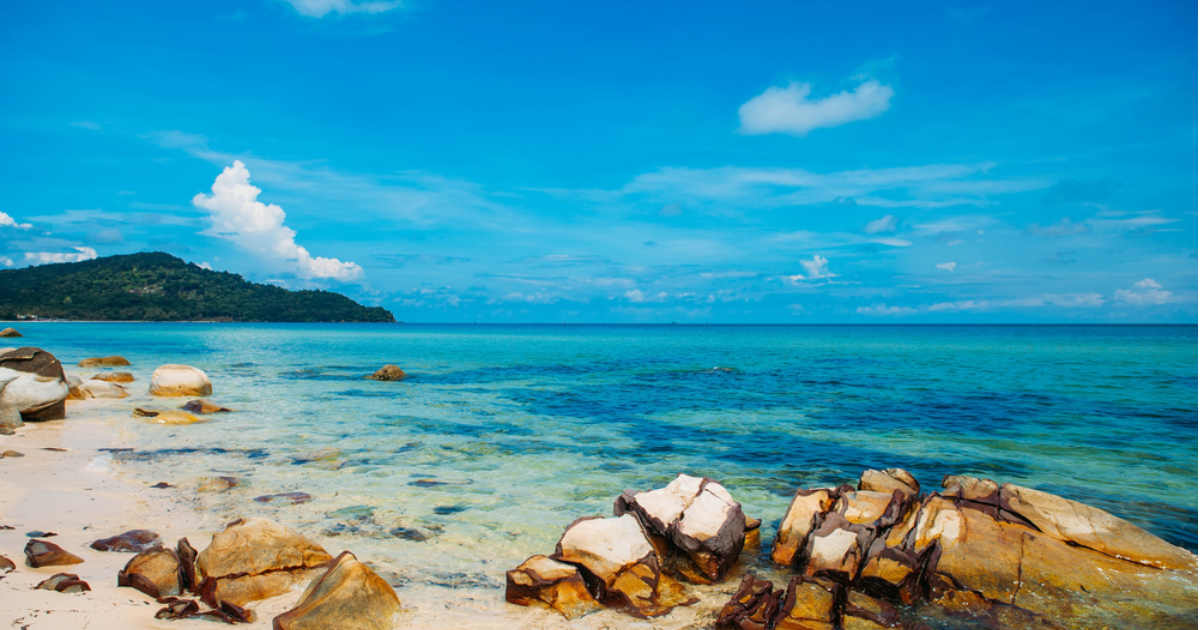
With its pristine beauty and fresh air, Cua Dai not only offers a sense of tranquility but is also a great place to explore exciting experiences by the beach. Visitors can enjoy the natural beauty and take part in lively water sports, creating unforgettable memories during their exploration of Hoi An.
Address: Cam An Ward, Hoi An City, Quang Nam Province, about 5 km east of the ancient town center.
2.8. Cu Lao Cham – Pristine beauty
Cu Lao Cham, a group of 8 small islands located about 18 km from Hoi An, was designated a biosphere reserve by UNESCO in 2009. It stands out with its unspoiled beauty, rich ecosystems, beautiful beaches, and well-preserved historical sites.

With its stunning natural scenery and biodiversity, Cu Lao Cham attracts not only beach lovers but also those wishing to explore the pristine beauty of Vietnam. It is truly a paradise for those who want to enjoy fresh air and immerse themselves in nature.
Address: Tan Hiep Island Commune, Hoi An City, Quang Nam Province, Vietnam.
2.9. My Son sanctuary – The sacred land of the Champa people
My Son Sanctuary, also known as the My Son Temples, is a valuable cultural complex of the Champa civilization. Recognized as a UNESCO World Heritage Site in 1999, it is not only an attractive destination but also a symbol of Vietnam’s history and art.
Built from the 4th to the 13th century, My Son was the religious and political center of the Champa Kingdom for over 10 centuries. The complex consists of more than 70 towers, many of which were constructed using brick, featuring intricate sculptures depicting Hindu deities, religious rituals, and everyday life of the Champa people.

My Son Sanctuary not only preserves unique cultural and historical values but also serves as an ideal destination for visitors from around the world. While touring, visitors can choose to travel by electric car or walk to explore the temples. Additionally, they can participate in Champa cultural performances and shop for handicrafts in nearby areas.
To protect the beauty and value of this heritage, visitors should observe some rules when visiting My Son Sanctuary: wear appropriate clothing, avoid littering or damaging the monuments, and ask for permission before taking photos or videos during religious ceremonies of the Champa people. These efforts will help preserve the cultural significance of the site while providing a memorable experience for everyone.
Address: My Son Village, Duy Phu Commune, Duy Xuyen District, Quang Nam Province, about 69 km west of Da Nang City.
>> Hang Nga Villa: A creative architectural wonder in Da Lat
2.10. Bay Mau coconut forest – “Southern Waterways” in the ancient town
Bay Mau Coconut Forest, one of the famous eco-tourism destinations in Hoi An, Quang Nam, is often described as a “miniature Mekong Delta” in the heart of the ancient town. It attracts visitors with its picturesque natural beauty, lush mangrove forests, traditional basket boats, and many unique cultural activities.
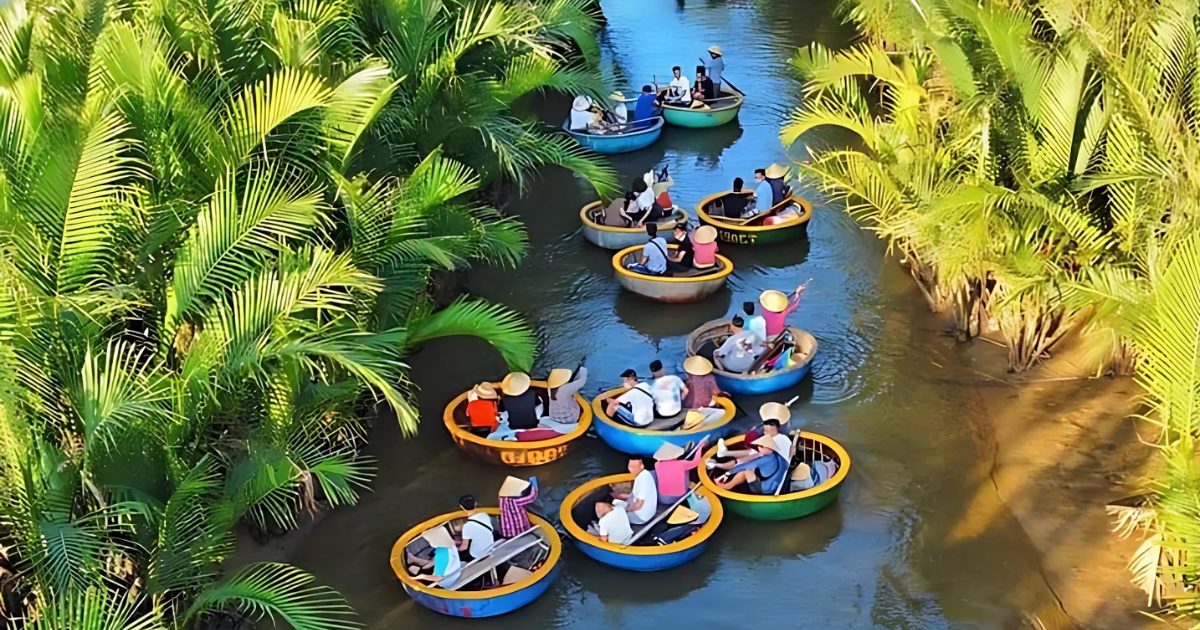
Visitors to Bay Mau Coconut Forest can enjoy a variety of exciting experiences, such as paddling basket boats through the forest’s narrow waterways, watching engaging basket boat dance performances, or participating in thrilling boat races. Additionally, fishing with nets is a fun activity that allows visitors to gain a deeper understanding of local life. A must-try here is the opportunity to enjoy local specialties, which have the unique flavors of this land.
Address: Cam Thanh Commune, Hoi An City.
2.11. Hoi An market
Hoi An Market, one of the distinctive cultural symbols of the ancient town, is a must-visit for anyone coming to Hoi An. Built in French architectural style with curved tiled roofs and tall columns, the market is not only bustling with a variety of goods but also a testament to the history and cultural identity of Hoi An.

At Hoi An Market, visitors not only have the chance to learn about the lives and culture of local people but also experience the fun of shopping and savoring delicious local dishes. Moreover, the market’s surroundings offer a perfect setting for memorable photos.
The market is open from 6:00 AM to 10:00 PM, promising visitors a rich and exciting experience in the lively atmosphere of one of the most famous traditional markets in Central Vietnam.
Address: 19 Tran Phu, Cam Chau, Hoi An.
2.12. VinWonders south Hoi An
VinWonders South Hoi An, located in Quang Nam Province, has quickly established itself as one of Vietnam’s leading entertainment complexes, often called a “paradise of fun” with five main exciting zones.
At the Fusion Port, visitors can experience distinct cultures from various civilizations around the world. The Water World offers thrilling rides and modern relaxation areas. Meanwhile, the River Safari allows visitors to explore wildlife aboard a riverboat. For adventure enthusiasts, the Adventure Land provides numerous challenging rides. Finally, the Folk Culture Island is an ideal destination to explore the traditional cultures of Vietnam’s ethnic groups.

VinWonders South Hoi An not only provides visitors with vibrant entertainment experiences but also hosts special performances and annual festivals. Visitors can also enjoy diverse international cuisines and shop for unique souvenirs at the retail stores in the amusement park.
The park is open daily from 9:00 AM to 7:15 PM, with ticket prices ranging from 250,000 VND to 600,000 VND per person, depending on the type of ticket and visitor category. VinWonders South Hoi An is truly an ideal destination for those seeking enjoyable and relaxing moments of entertainment.
Address: Thanh Nien, Binh Minh, Thang Binh, Quang Nam.
>> Hon Chong – The pristine beauty and wonders of nature
3. Hoi An cuisine
3.1. Cao Lau – Famous specialty
Cao Lau from Hoi An, a renowned dish of the ancient town, stands out with its chewy, golden noodles and rich broth made from pork bones, shrimp, squid, and crispy pork skin. When enjoying Cao Lau, it is essential to include the char siu pork, Vietnamese sausage, fresh herbs, and a special dipping sauce. Each bowl of Cao Lau not only offers a unique flavor but also reflects the rich culinary culture of Hoi An, making it an experience not to be missed.

Suggested places to try Cao Lau:
- Cao Lau Hoi An: Address: 245 Ton Duc Thang, Tan An, Hoi An, Quang Nam.
- Cao Lau Mi Quang Loc Hoi An: Address: 128 Tran Cao Van, Minh An Ward, Hoi An, Quang Nam.
- Cao Lau Thanh Restaurant: Address: 1 Thai Phien/26 Phan Thanh Tai, Hoi An, Quang Nam. Note: be cautious of counterfeit shops.
- Cao Lau, Mi Quang Co Ly: Address: Night Market, La Hoi/2c Nguyen Hoang, Minh An Ward, Hoi An, Quang Nam.
- Mi Quang Cao Lau Ngon: Address: 53/16 Phan Chu Trinh St, Minh An Ward, Hoi An, Quang Nam.
3.2. Mi Quang – Unique humble dish
Mi Quang from Hoi An, although originating from Quang region, has been adapted with a distinct flavor that showcases the culinary identity of the ancient town. The dish features large, chewy noodles and a light, sweet broth made from pork and chicken bones. Mi Quang is typically served with pork, shrimp, quail eggs, fresh herbs, and rice paper, creating a harmonious and enticing combination. This is a must-try culinary experience when visiting Hoi An.

Suggested places to try Mi Quang:
- Mi Quang Co Sinh: Address: 170/5 Ly Thuong Kiet, Son Phong, Hoi An, Quang Nam.
- Mi Quang, Com Ga Que Huong Specialty Hoi An: Address: 164/3b, Ly Thuong Kiet, Son Phong, Hoi An, Quang Nam.
- Mi Quang Chi Ha: Address: 2 Thai Phien, Minh An Ward, Hoi An, Quang Nam.
- Mi Quang Co Sau: Address: 191 Nguyen Truong To, Minh An Ward, Hoi An, Quang Nam.
- Mi Quang Hoi An Co Mai: Address: 470 Hai Ba Trung St, Cam Son, Hoi An, Quang Nam.
3.3. Banh Canh – Rustic dish
Banh Canh from Hoi An is known for two main types: rice flour Banh Canh and tapioca flour Banh Canh. The rice flour version is popular for its smooth, chewy noodles and rich broth made from crab, shrimp, and pork. Meanwhile, the tapioca flour Banh Canh is distinguished by its chewy skin and tasty shrimp and pork filling, often served with sweet and sour fish sauce. Both types of Banh Canh provide an enjoyable culinary experience for visitors to Hoi An.

Suggested places to try Banh Canh:
- Banh Canh Ba Quit Hoi An: Address: 51 Thanh Hoa, Tan An, Hoi An, Quang Nam.
- Banh Canh Co Luon: Address: 276 Ly Thuong Kiet, Minh An Ward, Hoi An, Quang Nam.
- Banh Canh Xuan: Address: 04 Ngo Si Lien, Tan An, Hoi An, Quang Nam.
- Banh Canh Xuan Branch 2: Address: 232 Ly Thai To, Cam Son, Hoi An, Quang Nam.
- Hanoi Spring Rolls and Noodles: Address: 53 Ly Thai To, Son Phong, Hoi An, Quang Nam.
>> Cu Lan Village – Where vature and culture oncverge
3.4. Wonton noodles
Wonton noodles are a famous dish in Hoi An, adored for their delicious taste. Originally from China, this dish comes in two variations: wonton noodle soup, with a sweet, clear broth made from pork and chicken bones, and dry wonton noodles served with a tangy-sweet sauce. Diners can adjust the seasoning to their taste and add fresh herbs like basil and bean sprouts to enhance the flavor. This dish is a must-try when exploring the cuisine of Hoi An.

Suggested places to try Wonton Noodles:
- Wonton Noodles No. 5: Located at K222 Ly Thuong Kiet, Son Phong, Hoi An.
- Hoanh Thanh Anh Dung: Located at 14 Ba Trieu, Cam Pho Ward, Hoi An.
- Hu Tieu Hai Toan: Located at 44 Phan Chu Trinh, Minh An Ward, Hoi An.
- Many other great wonton noodle shops can also be found in Hoi An.
3.5. Banh Vac
Banh Vac, one of Hoi An’s famous specialties, is made from rice flour with a filling of pork and wood ear mushrooms, shaped like delicate flowers. This dish is typically served with sweet and sour fish sauce and fresh herbs, creating a unique and fragrant flavor. For the best experience, it’s recommended to enjoy Banh Vac while it’s still hot, as it reaches its peak flavor and freshness.

Suggested places to try Banh Vac:
- Bong Hong Trang Restaurant: Address: 533 Hai Ba Trung St, Cam Pho, Hoi An, Quang Nam.
- Trung Bac Restaurant: Address: 87 Tran Phu St, Minh An Ward, Hoi An, Quang Nam.
3.6. Wet rice paper rolls with grilled pork
Wet rice paper rolls with grilled pork is a simple yet irresistible dish. Thin, soft rice paper rolls are perfectly steamed to maintain their chewy texture. The grilled pork, served with fresh herbs, is then wrapped in the rice paper and paired with a sweet and sour dipping sauce, spiced with garlic from Ly Son and green chili. This combination creates a memorable and distinctive flavor that will captivate any diner.

Suggested places to try Wet Rice Paper Rolls with Grilled Pork:
- Grilled Pork Co Loi Hoi An: Address: 03 Nguyen Hue, Cam Chau, Hoi An, Quang Nam.
- Banh Cuon Thiit Nuong: Address: 2-8 Phan Chu Trinh St, Cam Chau, Hoi An, Quang Nam.
- Grilled Pork Restaurant Co Mot: Address: 98 Phan Chu Trinh St, Minh An Ward, Hoi An, Quang Nam.
3.7. Com Ga – Unforgettable memory
Com Ga from Hoi An is known as one of Vietnam’s most famous dishes. With its delicious and rich flavor, it uses carefully selected chicken, paired with rice cooked in chicken broth, creating sweet and flavorful grains. What makes this dish even more appealing is its beautiful presentation. When served with banana blossom salad, herbs, and a special fish sauce, Hoi An Com Ga becomes even more savory and enticing, leaving a lasting impression on any diner.

Suggested places to try Com Ga Hoi An:
- Com Ga Ba Buoi: Address: 22 Phan Chau Trinh St, Hoi An.
- Com Ga Ba Nga: Address: 22 Phan Chau Trinh St, Hoi An.
- Com Ga Ba Thuan: Address: 22 Phan Chau Trinh St, Hoi An.
- Com Ga Ba Huong: Address: Kiet Sica, Hoi An.
- Com Ga Ba Lu: Address: 49 Tran Cao Van, Hoi An.
3.8. Hoi An bread – Famous street food
Hoi An bread has become a popular street food, attracting many tourists when visiting the ancient town of Hoi An. With a crispy crust and a rich filling, Hoi An bread includes grilled meat, pate, Vietnamese pork sausage, pickled vegetables, herbs, and chili, all wrapped inside the bread crust. The highlight of the dish is the special sauce, carefully made from finely ground pork liver combined with fish sauce, sugar, pepper, garlic, and chili, creating a rich, savory, and slightly spicy flavor. This perfect combination creates the distinctive taste of Hoi An bread, making it irresistible to visitors.

Suggested places to try Hoi An bread:
- Banh mi Phuong: 2B Phan Chau Trinh
- Banh mi Madam Khanh: 26 Thai Phien
- Banh mi Bich: 22 Phan Chau Trinh
- Banh mi co Lanh: 15 Tran Cao Van
- Banh mi Hoi An Pho co: 22 Phan Chau Trinh
- >> Explore the Imperial City of Hue: The timeless beauty of the ancient capital citadel
3.9. Green bean cake – A gift with the taste of Quang
Hoi An green bean cake, one of the famous specialties of the region, is made from simple ingredients like green beans, sugar, lard, and sesame, but it offers a delicious, rich flavor with a unique taste. There are various types of green bean cakes, with the most popular being the ones filled with green bean paste, pork fat, and coconut. Each variety offers a sweet, fragrant flavor and is often enjoyed with hot tea or coffee. The price of Hoi An green bean cakes ranges from 35,000 to 50,000 VND per box, depending on the type and weight, making it a delicious and easily accessible treat for tourists.

Suggested places to try green bean cake:
- Banh dau xanh Ba Trinh: 26 Thai Phien, Hoi An City, Quang Nam.
- Banh dau xanh Muoi Hoa: 105 Tran Cao Van, Hoi An City, Quang Nam.
- Banh dau xanh Bong: 195 Nguyen Chi Thanh, Hoi An City, Quang Nam.
- Banh dau xanh Phuong Hoa: 532 Hai Ba Trung, Hoi An City, Quang Nam.
4. Ideal accommodations
- Vinpearl Riverside Hoi An Resort, located at 01 Nguyen Du, Cam Chau, Hoi An City, Quang Nam.
- Fusion Maia Resort Hoi An, located at Bai Bac, Hoi An City, Quang Nam.
- Four Seasons Resort The Nam Hai, located at Khoi Ha My Dong B, Dien Ban, Quang Nam.
- Wooden Lodge Homestay Hoian, located at Lac Long Quan, Tan Thanh, Cam An.
- The Moon River Homestay & Villa, located at Cam Ha, Hoi An, Quang Nam.
- Cocohut Hoian Homestay, located at To 4, Khoi Phuoc Trach, Cua Dai, Hoi An.
- AnBang Morning Glory Beach Homestay, located at An Bang Beach, Cam An, Hoi An.
- Seaside An Bang Homestay, located at Tan Thanh, An Bang, Cam An, Hoi An.
>> Thien Mu Pagoda – A spiritual destination not to be missed when visiting Hue
5. Things to keep in mind when traveling to Hoi An
To have a fulfilling trip to Hoi An, tourists should keep in mind some important things:
- Prepare information: Before your trip, make sure to have a map and information about tourist attractions to make your journey smoother.
- Wear appropriate clothing: It’s recommended to dress modestly when visiting historical and cultural sites in the city.
- Exchange money and carry cash: Make sure to exchange Vietnamese dong and carry some cash, as some shopping areas might not accept foreign currency or electronic payments.
- Bargaining when shopping: Bargaining is common and often encouraged at markets in Hoi An.
- Basic communication: Learning some basic Vietnamese phrases and local words will help you interact easily with locals.
- Protect the environment: Lastly, keep the environment clean and protect nature throughout your trip.
>> Hoan Kiem Lake Pedestrian Street – A romantic beauty in the heart of the capital
We hope this information helps you have a pleasant and fulfilling trip to Hoi An!
Follow MyHuy Global to stay updated with exciting travel experiences!


